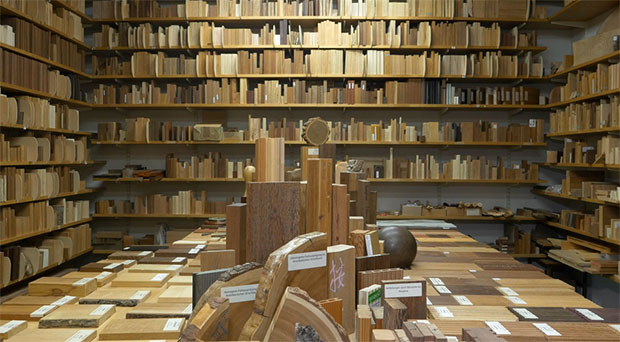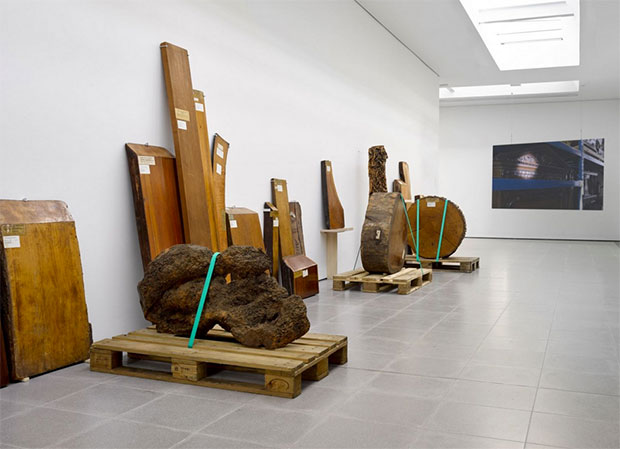 LONDRES.
LONDRES.
Formafantasma are an Italian design duo based in Amsterdam. Their work looks at design’s ecological and political responsibilities, while probing the global industries that consume natural resources.
Formafantasma (Andrea Trimarchi and Simone Farresin) are designers who dissect the ecological and political responsibilities of their discipline. Their holistic approach reaches back into the history of a particular material used by humans, out towards the patterns of supply chains that have developed to support and expand its use, and forward to the future of that material’s survival in relation to human consumption.
Cambio, from the medieval Latin cambium, ‘change, exchange’, is an ongoing investigation conducted by Formafantasma into the governance of the timber industry. The evolution of this form of commerce over time, and its tentacular expansion across the globe, has made it difficult to regulate. It grew out of the bioprospecting that took place throughout colonial territories during the nineteenth century, becoming one of the largest industries in the world both in terms of the revenue it generates and the impact it has on the planet’s biosphere.
Cambio also references the cambial layer, a membrane that runs around the trunk of trees, producing wood on the inside, a record of the tree’s past, and bark on the outside, enabling it to keep growing. Like the rings of a tree, the central spaces of the exhibition present data and research in the form of interviews, reference materials and two films made by Formafantasma in response to their research, while the perimeter spaces offer a series of case studies that provide insight into the way wood is sourced and used. Each of these investigations represents a collaboration with experts from the fields of science, conservation, engineering, policymaking and philosophy. Together, they move from a microscopic analysis of wood and its ability to store carbon dioxide, to a metaphysical understanding of trees as living organisms.
This multidisciplinary exhibition highlights the crucial role that design can play in our environment, and its responsibility to look beyond the edges of its borders. The future of design can and must attempt to translate emerging environmental awareness into a renewed understanding of the philosophy and politics of trees that will encourage informed, collaborative responses. 4 Mar 2020 to 17 May 2020. Serpentine Gallery. 

 Photos: Serpentine Gallery.
Photos: Serpentine Gallery.








